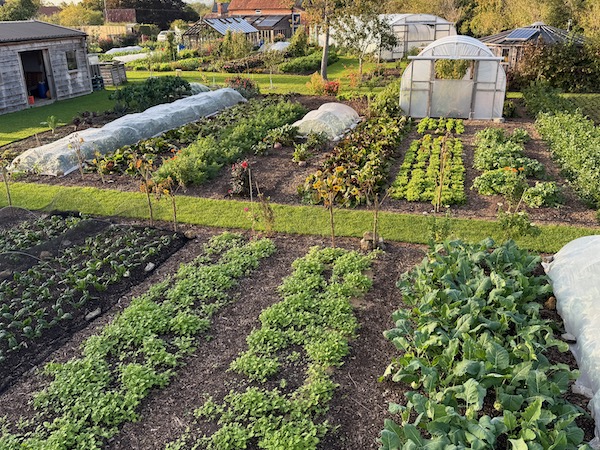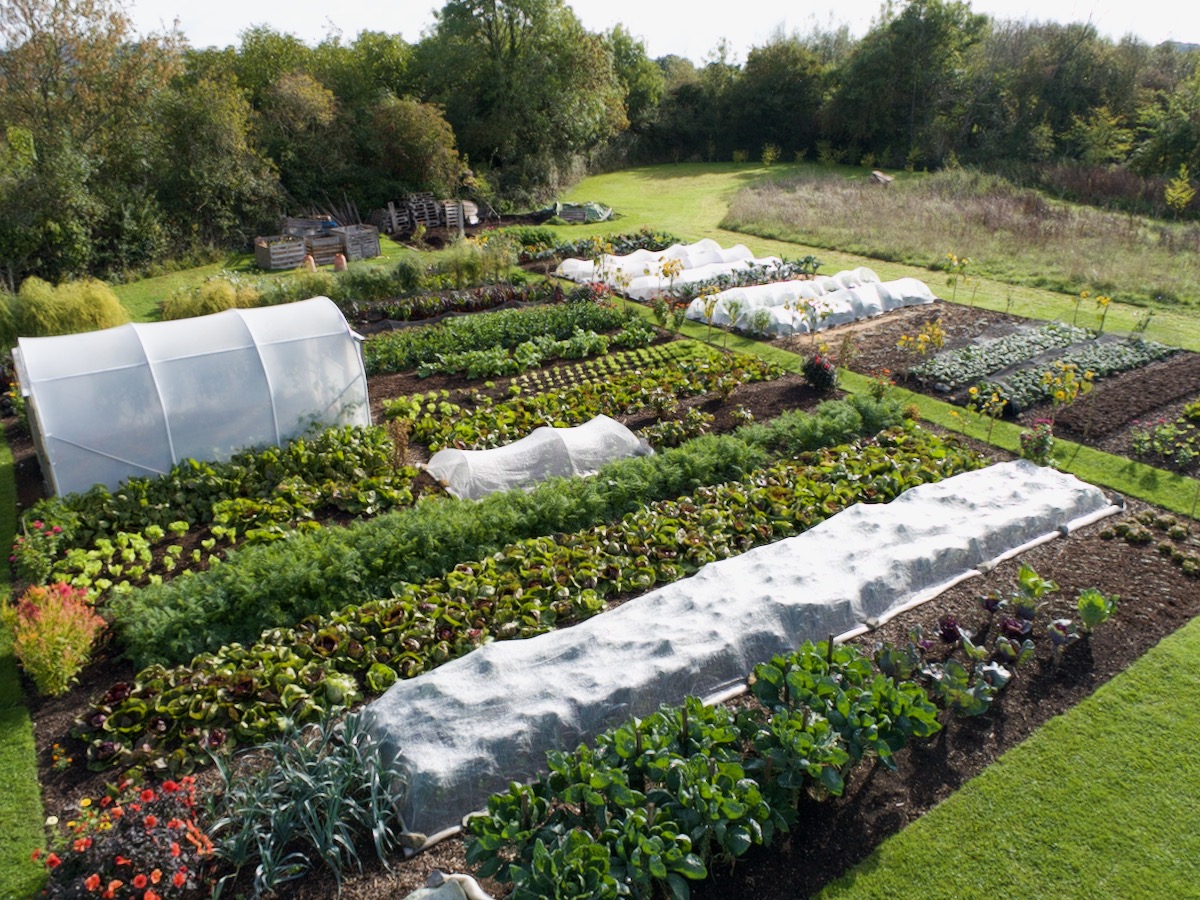May 2024, we need warmth
Heading


Advantages of doing less
No dig is great for weed control. Much of the new area above was full of bindweed Convolvulus arvensis in 2021. Now there is almost none except near edges.
Plus no dig helps soil to cope with excess rain, thanks to no interruption in the lines of capillary flow of water downward. Then in dry weather there is free movement of ground water upwards. Likewise soil stays warmer in cold weather thanks to uninterrupted connection with warmth at lower levels.

Hakurei turnips - see also my cover photo
Tokyo Cross is a hakurei type, not the same as the more traditional purple top or golden turnips. It's denser and sweeter, very tasty raw and best harvested before the diameter exceeds about 5 cm/2". They are a vegetable for the hungry gap, thanks to their speedy maturity.
Best not sow them now because they will go to seed in early summer. Sow again in August, for autumn harvest. Keep fleece or mesh over against cabbage root fly.

Trial bed harvests 30th April
On 30th April I harvested all the radish, a third of the turnips and a first pick of lettuce. Total harvests were 197kg no dig. and 0.64kg dig bed.
The difference is strong between all vegetables.


What is happening here?

Effects of temperature and cloud
I am seeing dramatic changes to the sky and clouds I used to know. Almost always since last autumn even before, any holes in the pervasive low clouds allow sight of white vapour lines obscuring what would be blue. So the sun is weaker, and a milky white colour instead of golden. Somebody is usng a lot of money and resources to do this.
The effect on plant growth concerns me. and I am trialling a few ways to help growth. Before saying in public, I want to see more how they work. A bonus of the absence of clear skies is nights less cold. The rise in temperature globally is partly that, from warmer nights.
Long story short, we can plant frost tender tomatoes and courgettes etc, earlier than usual. Maybe with fleece over for a week or two to add warmth by day..

Using covers
I am so grateful for fleece covers, for the warmth and wind protection they afford. See the effects on beetroot above and lettuce below. First pick of outdoor lettuce was 23rd April, from 21st March transplants.
Normally I remove fleece covers by early May. This reduces the risk of plants overheating, especially in dry weather when the roots may be short of moisture. This year, neither factor applies so I'm keeping covers on for longer.


Sowing now
Larger seeds, like sweetcorn and dwarf French beans are very easy to start in the small cells of my CD module trays (link for UK - see webpage for other-country links).I transplant sweetcorn and French beans from these trays, without potting on, when they are about three weeks old. You need decent compost, see below!
Sowing now and soon
Under cover only, it's a great time for sowing sweetcorn, courgettes and squash, to transplant outside after mid-May.For winter squash to have time to ripen in early autumn, sow this week if possible. If your summers are not hot, I recommend Uchiki Kuri because it ripens much earlier than say butternuts.
Sow summer beans from now in milder areas. Here I sow them mostly around 10th May.
Cucumbers sown now are cordon types (mostly) for transplanting in a polytunnel or greenhouse. Sow them after the middle of May if they are for transplanting outside.
You don't need to resow any of broad beans, peas for pods and shoots, lettuce, salad onions, leeks, cabbage, calabrese, cauliflower or beetroot, if they are growing already. Plus it's too early to make succession sowings.
Outside
If not already in the ground: potatoes, carrots, parsnips, lettuce, salad onions, radish, leeks, broad beans and peas. For the last three in the list, asap.
Find more dates in my Calendar, both paper and digital.

Potting on and compost quality
For just a few vegetables, it's worth popping them out of the module tray cells when about 10 days old, and into 7 cm or 9 cm pots. You can use the same compost. I do not use any special seed compost for sowing, except lettuce and basil, for which I add vermiculite or perlite to hold more air around roots.


More poor compost
Last May I ordered cow manure, I received cow manure. Except the cows had been bedded on woodchip! I did not like the look of it, but used it anyway.The wood-effects are more apparent now than they were last year. The cabbage plus onions above are hardly growing after one month, more than from low temperatures only.First photo below is garlic mulched with home-made compost, and the second photo shows garlic mulched with the woody cow manure. It is rusty already.


Get Charles's advice in his free newsletter
& 10% off your first order in our shop




